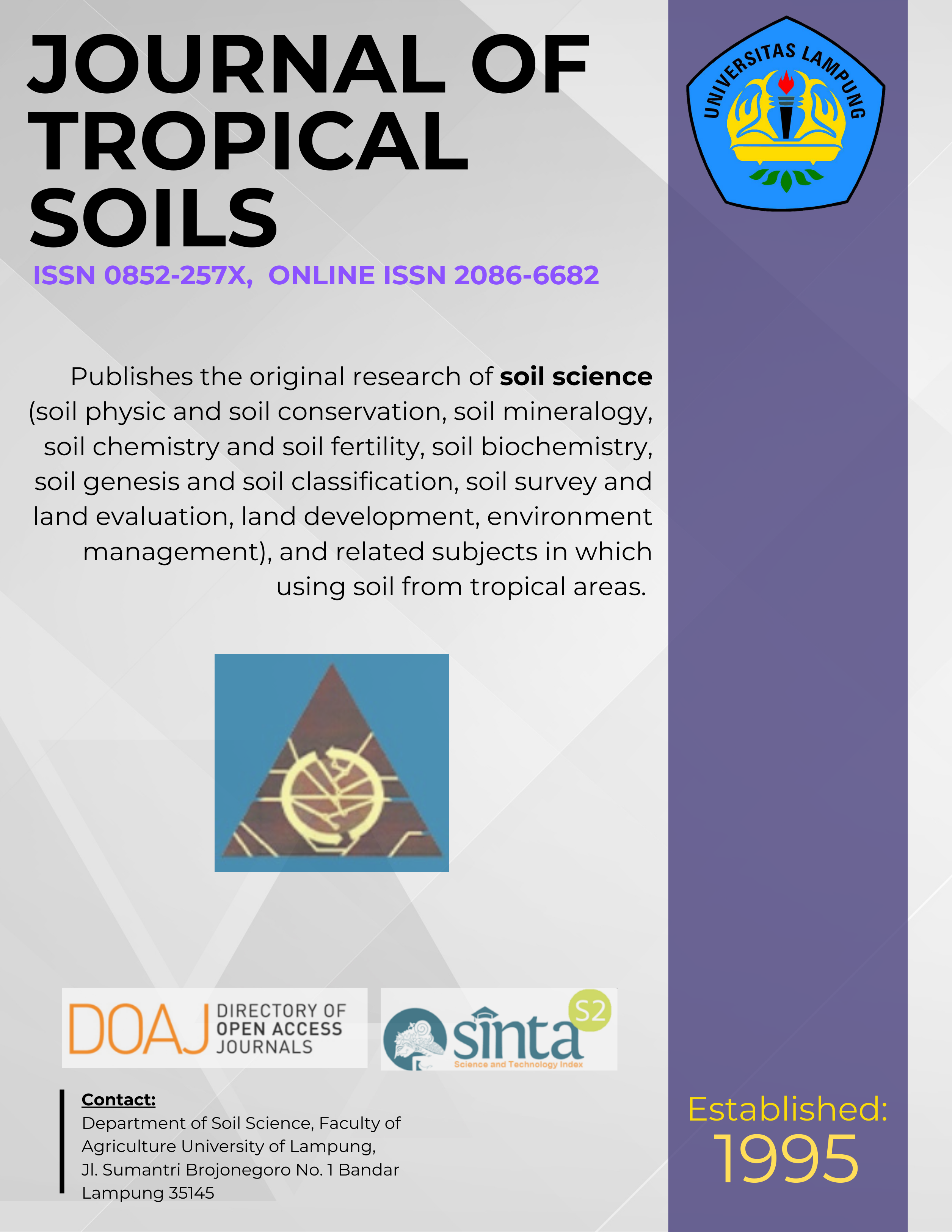Identification of Soil Salinity Due to Seawater Intrusion on Rice Field in the Northern Coast of Indramayu, West Java
Main Article Content
Abstract
The rice fields in Indramayu district is 55% of the district area. The average rainfall is 1590 mm per year. Most lands on the North Coast of Java (northern) were potentially affected by sea water intrusion. Extensive observations were 102.321 ha. Field observations were done by survey method. Observations had been conducted on rice fields Pantura, Indramayu, West Java. Soil salinity was measured by using the electromagnetic conductivity meter (EM-38). The results revealed that area had very high salinity which was 22.57%, closest to the beach Indramayu. In the South Region, soil salinity was lower, in accordance with the distance from the coastline. Some areas had a low, medium, and high salinity status in which 58.41%, 8.54% and 10.49%, respectively. Much of the research area had very high Sodium (Na) and ECe (0 - 30 cm) was between 1.37 to 16.38 dS m-1, while the ECe (30 - 70 cm) was between 1.11 to 17.40 dS m-1. This research was expected to assist in the agricultural development planning, especially in wetlands which have been affected by the intrusion of sea water (salinity). Planning for the
implementation of the development of rice varieties that are sensitive to high and very high salinity. Planning and improvement of irrigation networks as sources of clean water for washing the salts or pushing salt water into the sea.
Keywords: Coast of Indramayu, rice field, seawater intrusion, soil salinity
Downloads
Article Details
Issue
Section
License for Authors
Authors who publish with this journal agree to the following terms:
- Authors retain copyright and grant the journal right of first publication with the work simultaneously licensed under a Creative Commons Attribution License that allows others to share the work with an acknowledgement of the work's authorship and initial publication in this journal.
- Authors are able to enter into separate, additional contractual arrangements for the non-exclusive distribution of the journal's published version of the work (e.g., post it to an institutional repository or publish it in a book), with an acknowledgement of its initial publication in this journal.
- Authors are permitted and encouraged to post their work online (e.g., in institutional repositories or on their website) prior to and during the submission process, as it can lead to productive exchanges, as well as earlier and greater citation of published work (See The Effect of Open Access).
License for Regular Users
Other regular users who want to cite, distribute, remix, tweak, and build upon author’s works, even for commercial purposes, should acknowledge the work’s authorship and initial publication in this journal, licensed under a Creative Commons Attribution License.

